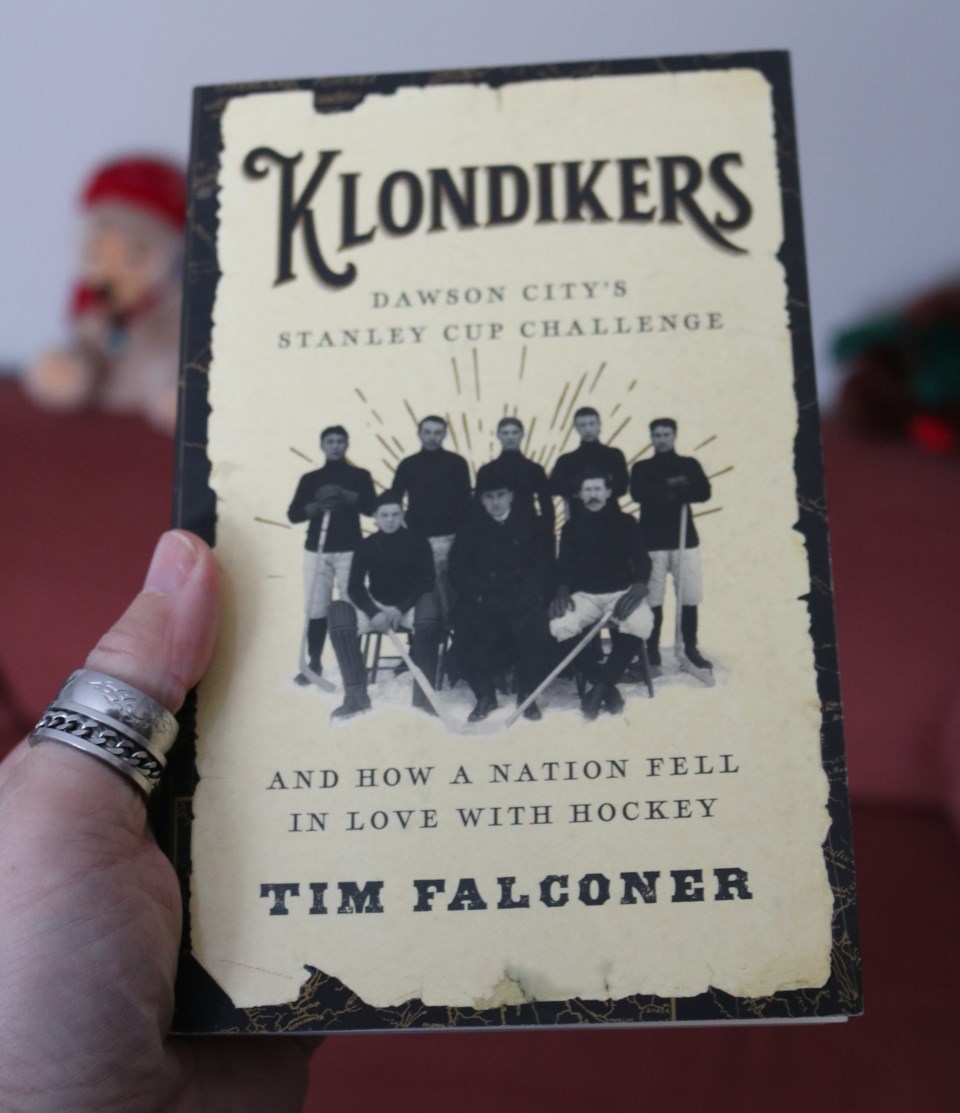The book; Klondikers: Dawson City’s Stanley Cup Challenge and How a Nation Fell in Love with Hockey at first glance is about the rather fabled Dawson City team that ‘mushed’ out of the north, traversing the nation to try for a rather insubstantial trophy.
But, hang on folks, this book actually tells a far grander story.
This is a book about a very young Canada falling deeply, passionately, completely head-over-heels, in love with a fledgling sport called hockey.
“Canada fell in love with hockey so quickly. I didn’t realize that,” said Falconer in a recent telephone chat with the author.
In part the love affair was spurred on by the donation of a Victorian punch bowl “with gold gilding inside, on a pedestal base, that in 1892 cost 10 guineas.
Originally inscribed the Dominion Hockey Challenge Cup, the trophy was donated by Lord Stanley of Preston, then Governor General of Canada. It was originally a "challenge trophy" for Canada's top-ranking amateur ice hockey clubs, which was what drew the Dawson City team out of the north.
The Stanley Cup, as we know it today, would be far more instrumental in growing the sport, and connecting the country than Lord Stanley could have imagined.
“It had a much bigger impact than it should have,” said Falconer, adding as a new country began emerging from the shadow of Victorian England “it was sort of love at first sight.”
Aided by a growing rail system, the ribbons of steel allowing teams to travel city-to-city to play, and the telegraph providing a way to offer the first ‘radio-style’ play-by-play, hockey exploded.
The first glimpse of what would come was seen when Montreal challenged Winnipeg for the Cup in December 1896, supporters in both cities followed the play-by-play via telegraph updates.
“It spread quickly across the country. This is when Canada falls in love with hockey,” said Falconer.
But, why? Rail and telegraph could have done the same for lacrosse or cricket.
“I think the game itself. It’s exciting – the pace of the game,” said Falconer. “It was a mixture of finesse and ferocity that appealed to people.”
And then there was the reality of Canada, a country with more months of snow and cold than most.
That is particularly true in Canada’s north where Falconer said people “have to make peace with winter.”
For many from the first to move north until today that ‘peace’ has included taking to sports, cross country skiing, curling and perhaps most often hockey.
“You found a piece of ice and played hockey. You needed to do that for your sanity,” offered Falconer.
So when gold was discovered in the Klondike, and thousands headed north to find their fortune, they were soon playing hockey too.
And, then based on pure audacity and pluck the fortune seekers turned hockey players began to think they are pretty good at the game.
In 1905 they go as far as to send a challenge for the ‘Stanley Cup’ to perennial powerhouse Ottawa. They are ready to cross the country where they fully expect to capture the cup.
The idea for a challenge came from Ottawa star Weldy Young who had moved to the Yukon in 1899, and “within a year was talking about a Cup challenge,” noted the book ‘jacket’. “With the help of Klondike businessman Joe Boyle, it finally happened six years later.”
This is the story Falconer said he set out to tell.
“Originally I wanted to do a book about the Dawson challenge,” he said, adding he always knew he’d add in social and political commentary from the time to round out the story.
But, in time the history of hockey’s earliest years, the Stanley Cup, and the Yukon gold rush became larger elements in the book.
“There just wasn’t enough material on the Dawson team,” he said, adding he had “too much to give up, but not enough to go on,” regarding the team.
Then the telegraph play-by-play came to life, and the picture of burgeoning love affair took over to help Falconer fill out a book.
Still, the heartbeat of the book is the Dawson team – seven players on a quest across a nation still in its youngest years.
“An underdog hockey team traveled for three and a half weeks from Dawson City to Ottawa to play for the Stanley Cup in 1905. The Klondikers’ eagerness to make the journey, and the public’s enthusiastic response, revealed just how deeply, and how quickly, Canadians had fallen in love with hockey,” details the publisher page for the book.
Can you imagine the effort it took?
Three of the players began the trek walking from Dawson City. Four more followed on bicycles the next day.
They took ships down the coast.
They rode the rails east.
All to play for a trophy Lord Stanley noted “it looks like any other trophy I suppose.”
Can anyone imagine Connor McDavid or Auston Matthews on a three-week trek starting by a walk in a Yukon winter with nights in a tent to play a best-of-three for the Cup?
So it’s no surprise the effort of the Klondikers caught the imagination of a nation. It didn’t matter that ultimately “Ottawa pounded the exhausted visitors, with ‘One-Eyed’ Frank McGee scoring an astonishing 14 goals in one game.”
No one seemed to care. It was hockey and it was by then the national pastime.
That is the stuff to fill a fine book, and that is just what Falconer has written --a stocking stuffer for hockey fans to be sure.
“I’ve signed a few books to ‘Dad’ already,” he said.






